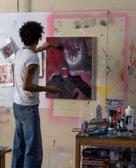
Review on 📷 Nikon D800 FX-Format Digital SLR Camera (Body Only) - 36.3 MP CMOS Sensor (Previous Model) by Jimmy Breaux

Fantastic upgrade for SLR cameras
I am writing this review as a former user of the d200, then the d300 and now the d800. I've been using the d800 with different lenses in different shooting conditions for several months now. I use the camera for professional work, including portraits and product photography, as well as for fun. Controls: I updated my d300 because I dropped it and the flash stopped working. The transition was relatively smooth, although I found I had to relearn and remap some of the controls. Still drawn to the switch between the "+" and "-" buttons, I miss the old autofocus mode selector that used to be on the back of my d300. I want the bracketing button to be easily accessible so I can easily shoot with HDR cameras. Overall I like the layout of the controls better than the d300, particularly the one-touch Live View button and the easy toggle between AF and MF. Using DX lenses: I still use my 17-55 DX lens with the d800 and am very happy with the results now. I set up a custom button to toggle between FX, 1.2x and DX crop modes which is a lifesaver when using my old 17-55. Aside from the widest settings, I like to use this lens in 1.2x crop mode to get good, detailed 25MP images without too much vignetting. I have a 27" Imac and on this screen I can't tell a 15MP DX cropped image from a full screen 36MP image, but for larger prints it might make a difference. One thing I really love about full resolution photography is 36 megapixels. it is a cut without penalty. I had to be careful with my 12mp d300 not to crop too much and lose image quality, but now I crop half a 36mp file and am still amazed at the amount of detail. Overall I see no problem using my DX lenses with the new camera and actually enjoy the extra flexibility and creativity they offer. Sometimes I like the round image that produces 17-55 at the widest FX Crop value. In ISO quality, the d800 wins by about 2 2/3 stops. I used to shoot up to ISO 400 with my d300 and was completely satisfied with the noise, dynamic range and color quality. With the d800 I can now increase ISO to 2500 and above and be fully satisfied with the image quality. In some situations I find that increasing ISO d800 to ISO 5000 is about what I'm willing to go before the image quality degrades significantly. Auto ISO works much better and is easier to set up. RAW vs. JPEG: I like to shoot in RAW+JPEG and I've found that I mostly like JPEG. Reading the reviews I thought RAW offered HUGE headroom in the shadows and while I find there is a good amount of data in the shadows I'd say no more than a stop. The files are very detailed but you can definitely see the anti-aliasing filter effects and at times I wish I had gone with the d800E. RAW images aren't super sharp by default, and I almost always have to sharpen them in software. On the plus side, I haven't seen any moiré in the thousands of images I've taken. I rarely switch from multi-zone metering as it's just really good for defining a scene and I don't have to use a lot of exposure compensation either. Live View: Live View is a HUGE improvement over the d300 which was almost unusable. It's great to have a button for quick access to live view! While the focus still leaves something to be desired in Live View, it eventually finds focus in most lighting situations. Autofocus: about the same as the d300. Fast and reliable as long as you find a spot with good contrast to fix on. Overall: I am very happy with the purchase of the d800. I recently bought a 50mm f/1.8 lens and used it for shallow depth of field and low light photography and I find the color quality and sharpness of this combination to be outstanding. If I could complain it would be that the live view focusing could have been better and the battery life not as good as my old d300 which was just insane. Build quality is also a bit lower than the d300, but overall it looks very professional. The d800's rear screen is excellent and I haven't had any issues with color casts. The left focus issues suffered by many other users didn't bother me. I would say that everything about the d800s' image quality is a step up from the d300 and the most important thing for me is that it allows me to shoot more freely. I shoot looser footage because I know I can always crop without loss of quality, and I rarely worry about what my ISO is, which used to be a constant concern with the d300. I've long argued about which camera would be the best upgrade for my d300. I hesitated between waiting for the d300 successor, buying a used d700, losing weight with the OMD-E5, buying a d600 or switching to a d800. A direct successor to the d300 would have been nice, but the additional depth of field in full frame was an important consideration for me as I shoot a lot of portraits. OMD would be great, but I had already invested quite a bit in Nikon glass and wasn't willing to compromise on low light image quality. I found the d600 too flexible and I wasn't happy with the control setup. In the end, I'm very happy with my decision, although there are times when I do landscape photography that I wish I'd gone with the d800e.
- Enjoyable
- A number of factors
New products
Comments (0)
Top products in 📷 Digital Cameras
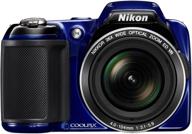
Nikon COOLPIX L810 Digital Camera: 16.1MP, 26x Zoom, NIKKOR ED Glass Lens, 3-inch LCD (Blue)

95 Review
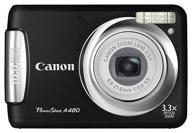
Canon PowerShot A480 camera, black

108 Review
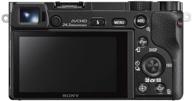
Revamped Sony Alpha a6000 Mirrorless Digital Camera: 24.3MP SLR Camera with 3.0-Inch LCD and Power Zoom Lens

103 Review
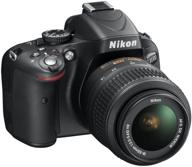
Nikon D5100 Digital SLR Camera with 18-55mm VR Lens - High Resolution 16.2MP

172 Review





